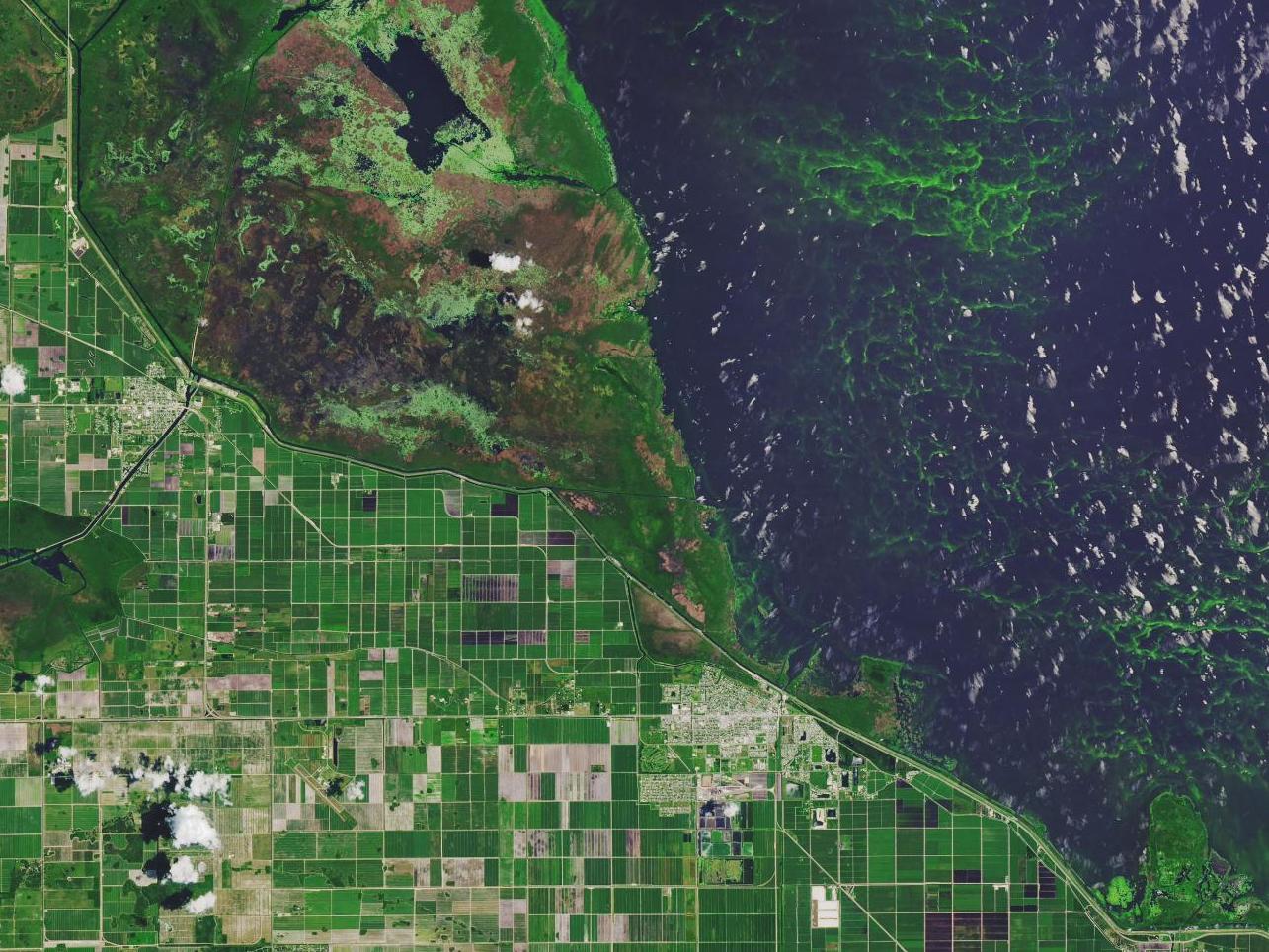Toxic algal blooms increasing in lakes worldwide as global temperatures rise, study finds
Organisms contain toxins that can cause liver damage, lead to respiratory paralysis or produce other fatal conditions in humans

Your support helps us to tell the story
From reproductive rights to climate change to Big Tech, The Independent is on the ground when the story is developing. Whether it's investigating the financials of Elon Musk's pro-Trump PAC or producing our latest documentary, 'The A Word', which shines a light on the American women fighting for reproductive rights, we know how important it is to parse out the facts from the messaging.
At such a critical moment in US history, we need reporters on the ground. Your donation allows us to keep sending journalists to speak to both sides of the story.
The Independent is trusted by Americans across the entire political spectrum. And unlike many other quality news outlets, we choose not to lock Americans out of our reporting and analysis with paywalls. We believe quality journalism should be available to everyone, paid for by those who can afford it.
Your support makes all the difference.Toxic algal blooms which can be fatal to humans, are increasing across the world as temperatures rise, according to the first global survey of dozens of freshwater lakes based on 30 years of Nasa data.
The increase is being driven by climate change, run off from chemicals used in agriculture and urban development, according to the research published in the journal Nature.
In humans, algae blooms cause symptoms such as tingling, numbness, shaking, slurring of speech, burning of the stomach and fever. They also release toxins that can cause liver damage, lead to respiratory paralysis or produce other fatal conditions.
A number of dogs have been killed after drinking water containing algal blooms.
Researchers from Carnegie Institution for Science used data from Nasa and the US’s Geological Survey’s Landsat 5 near-Earth satellite which monitored the planet between 1984 and 2013. They studied long-term trends in 71 large lakes in 33 countries on six continents and analysed more than 72 billion data points.
Co-author Jeff Ho from the Carnegie Institution for Science told The Independent: “It’s been well known that nutrients like nitrogen and phosphorus are the main drivers of algal blooms. Usually they get into lakes and reservoirs after extreme participation events and when they are in the lake, warmer temperatures exacerbate algal blooms.
“Climate change means extreme weather events are increasing which increases runoff of these chemicals.”
There were very few lakes in which algal bloom improved, researchers found. The lakes that did were ones that warmed the least which suggests global warming counteracts management efforts to improve water quality.
“We found that the peak intensity of summertime algal blooms increased in more than two-thirds of lakes but decreased in a statistically significant way in only six of the lakes,” said co-author Anna Michalak from Carnegie Institution for Science.
“This means that algal blooms really are getting more widespread and more intense, and it’s not just that we are paying more attention to them now than we were decades ago.”
Studies suggest they cost $4bn each year in the US alone. A sharp rise in algae populations have led to swimming bans from lakes in the Pacific Northwest to the entire Mississippi seacoast and Lake Hopatcong, New Jersey’s largest lake.
In May this year a sudden surge in algae killed at least eight million salmon in one week across Norwegian fish farms. The algae stuck to fishes’ gills and suffocated them.
The Norwegian Directorate of Fisheries said that more than 10,000 tonnes of farmed salmon, with a sales price of some 620 million Norwegian crowns (£56m), had been killed
Similar algal blooms were reported on the west coast of Scotland. killing thousands of fish in Loch Fyne with hundreds of tonnes of dead fish removed following the bloom.
Join our commenting forum
Join thought-provoking conversations, follow other Independent readers and see their replies
Comments